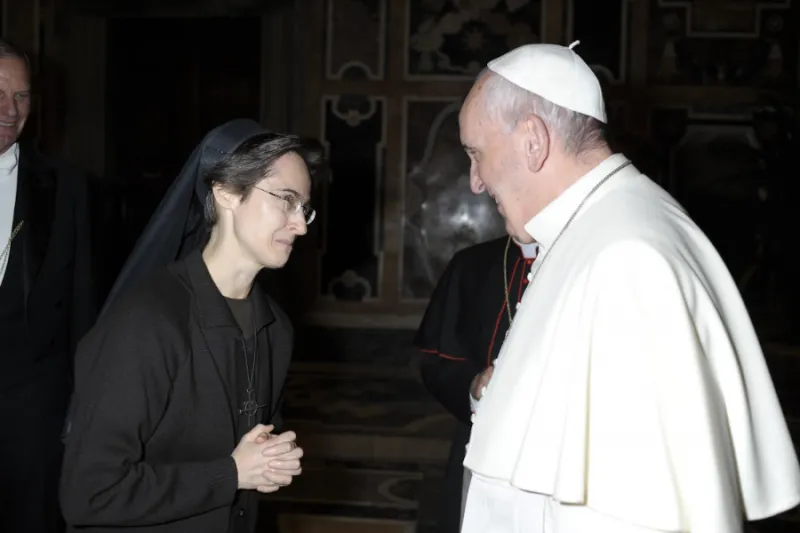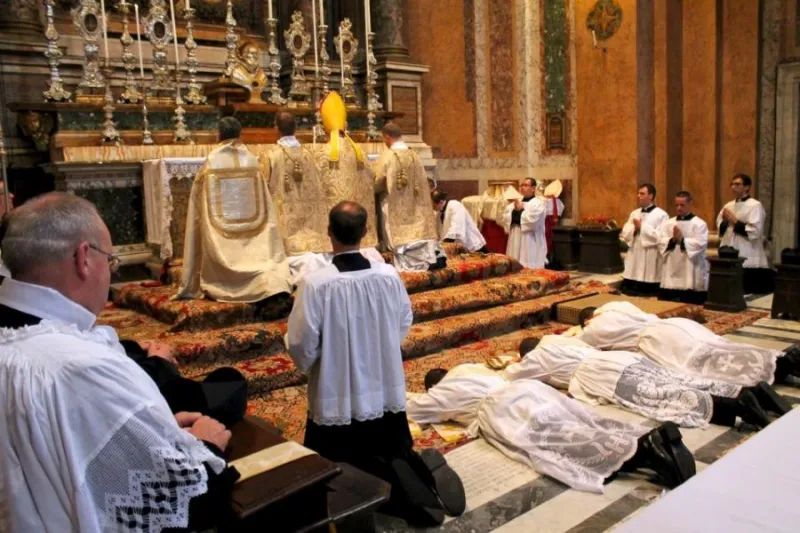
Vatican City, Nov 9, 2021 / 03:00 am (CNA).
The recent appointment of new leaders at the Vatican City State shows Pope Francis’ determination to break some circuits of power, but at the same time preserve the severely tested finances of the world’s smallest state.
On Nov. 4, the pope unexpectedly chose the Franciscan Sister Raffaella Petrini as secretary-general of the Vatican’s governorate. He also for the first time appointed a deputy secretary, Giuseppe Puglisi-Alibrandi.
The choice of Petrini is a sign. Pope Francis has selected a person outside of the governorate’s dynamics to administer a state machine strained by the pandemic.
The Vatican City State administration’s budget has not been published since 2016. The management of finances remains a mystery. There has also been talk of the need to put in order and rationalize the accounts.
By choosing Petrini, Pope Francis shows the will to reform once again, starting from relationships.
He did this too with the administrative office of the Vatican’s Secretariat of State. After 12 years of the direction of Msgr. Alberto Perlasca, Pope Francis called on the Lithuanian Msgr. Rolandas Makrickas, who had recently arrived in the Secretariat of State after serving at the nunciature in Washington, D.C.
Other choices in the Vatican financial sector also went in this direction: from Fabio Gasperini’s nomination as secretary of the Administration of the Patrimony of the Apostolic See (APSA) to Maximino Caballero Ledo’s appointment as secretary of the Secretariat for the Economy. In both cases, the pope selected laymen with considerable experience outside of the Vatican to address critical matters related to financial reform.
Petrini’s nomination fits into this context. But the pope’s decision was also read as giving more leadership responsibilities to women. This policy has been reflected in a series of appointments, including that of Sr. Nathalie Becquart as an undersecretary of the Synod of Bishops, Sr. Alessandra Smerilli as the interim secretary of the Dicastery for Promoting Integral Human Development, and Barbara Jatta as director of the Vatican Museums.
But Petrini’s appointment should not be read solely in this light. She is indeed a woman in a post reserved until now for an archbishop. But it is also true that the governorate does not have such a well-defined tradition.
The first governor was a layman: Camillo Serafini, an Italian nobleman who remained in office from the constitution of the Vatican City State in 1929 to 1953, the year of his death.
The governor’s position remained vacant until 2000, when John Paul II established the Pontifical Commission for Vatican City State and gave the president the duties formerly belonging to the governor.
The president has always been a cardinal and, consequently, the secretary has been an archbishop. But nothing was preventing the secretary from being a layperson or member of a religious order.
More than anything else, it is interesting to note that the secretary is now for the first time assisted by a deputy secretary.
Until his new appointment, Puglisi-Alibrandi had acted as the first consultant of the legal service of the machine that manages Vatican City State. In that role, he worked closely alongside Bishop Fernando Vérgez Alzaga, then secretary of the governorate. Vérgez, now an archbishop, was named president of the Vatican City State administration in September.
Petrini’s appointment serves to break some chains of acquaintances and give a new modus operandi to the governorate. But Puglisi-Alibrandi’s nomination is aimed at ensuring continuity in management.
The governorship is facing two main issues. The first is that of financial management, because the governorate — thanks to the Vatican Museums — is the only Vatican body making substantial profits. The governorate’s budget has been generally used to write off the so-called “mission budget” of the Roman Curia, which does not generate profits.
And yet the governorate’s budget has not been published for years, despite the intention to arrive at a consolidated budget including all Vatican entities.
Fabio Gasperini, who worked as a consultant at Ernst & Young, also proposed an independent accounting model for the governorate. But the administration decided to keep the production of internal financial statements firmly in its hands, developing an ad hoc computer program called Project One.
Now, however, Gasperini has become number two at APSA, the Holy See’s treasury, and is entrusted with rationalizing the administration and making APSA increasingly the Vatican’s “central bank.” In this work, he will find support from Puglisi-Alibrandi.
The second issue is that of employee insurance. Among the lay members of the Vatican’s Council for the Economy is Alberto Minali, the former CEO of the Cattolica company who worked before that at Generali, a major Italian insurance company. Minali is considered a possible bridge between Cattolica and Generali.
The governorate has an insurance contract for its employees with Cattolica, which has faced economic problems. Cattolica financed a recapitalization thanks to Generali. The Vatican followed this recapitalization closely, given that Cattolica manages all the governorate’s policies.
Within Cattolica, there is a Religious Entities Business Unit, created by Piero Fusco, which acts as a link between the Vatican and insurance, and has a strong connection with Puglisi-Alibrandi, who manages the policies through the legal office.
Puglisi-Alibrandi, who is close to Vérgez, will be called to outline the finances of the governorate in a new way, making them flow into the consolidated balance sheet of the Curia. He will also be asked to keep an eye out for the Vatican Museums, which is affected by the coronavirus crisis and now in the difficult situation of having to manage collaborators’ grievances.
But Puglisi-Alibrandi will not be able to do this in total autonomy. He will have to work alongside Petrini and give in-depth explanations. In this way, Pope Francis has guaranteed a sort of external control in managing potentially thorny situations.
After all, the pope’s financial reform passes through these decisions. Faced with problems, he first of all changes people, tries to break circuits of close friendships by bringing people from the outside, and refers above all to people he trusts or is sure he can rely on. All this comes before structural reforms. And that is what’s happening now with the governorate.
If you value the news and views Catholic World Report provides, please consider donating to support our efforts. Your contribution will help us continue to make CWR available to all readers worldwide for free, without a subscription. Thank you for your generosity!
Click here for more information on donating to CWR. Click here to sign up for our newsletter.






Leave a Reply